From working with our 90+ portfolio companies and their customers, as well as from frequent conversations with enterprise leaders, we have observed a set of software services emerge and evolve to become best practice for revenue teams. This set of services — call it the “revenue stack” — is used by sales, marketing and growth teams to identify and manage their prospects and revenue.
The evolution of this revenue stack started long before anyone had ever heard the word coronavirus, but now the stakes are even higher as the pandemic has accelerated this evolution into a race. Revenue teams across the country have been forced to change their tactics and tools in the blink of an eye in order to adapt to this new normal — one in which they needed to learn how to sell in not only an all-digital world but also an all-remote one where teams are dispersed more than ever before. The modern “remote-virtual-digital”-enabled revenue team has a new urgency for modern technology that equips them to be just as — and perhaps even more — productive than their pre-coronavirus baseline. We have seen a core combination of solutions emerge as best-in-class to help these virtual teams be most successful. Winners are being made by the directors of revenue operations, VPs of revenue operations, and chief revenue officers (CROs) who are fast adopters of what we like to call the essential revenue software stack.
In this stack, we see four necessary core capabilities, all critically interconnected. The four core capabilities are:
- Revenue enablement.
- Sales engagement.
- Conversational intelligence.
- Revenue operations.
These capabilities run on top of three foundational technologies that most growth-oriented companies already use — agreement management, CRM and communications. We will dive into these core capabilities, the emerging leaders in each and provide general guidance on how to get started.
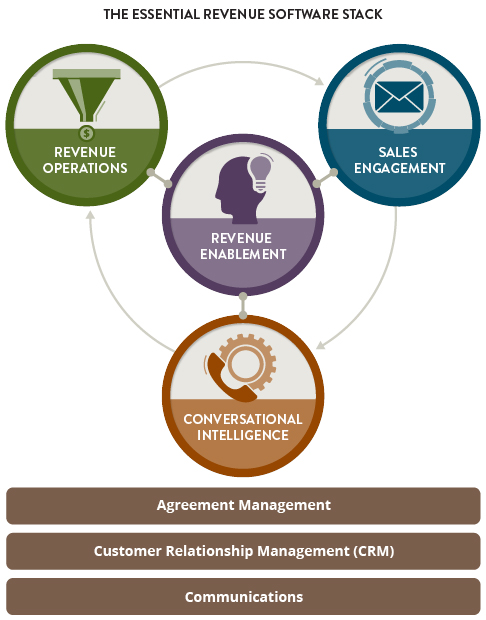
Image Credits: Madrona (opens in a new window)
Revenue enablement
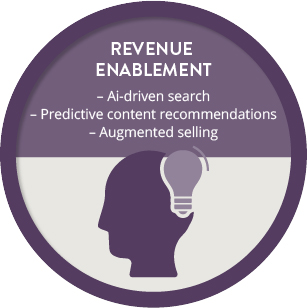
Image Credits: Madrona (opens in a new window)
Revenue enablement — what we see as the core of the essential revenue stack because of how the other components rely on it to tie everything together — is a relatively new concept that has quickly become a standard best practice over the last few years.
It is where sales, marketing and revenue leaders want to enable every customer-facing employee to be smarter in how they work with customers. With the usage of revenue enablement tools, reps can more nimbly utilize existing marketing and product content to support their conversations as well as augment asynchronous training with real-time on-the-job learning in order to deliver a consistently exceptional customer experience.
We see revenue enablement as the centerpiece of the modern revenue stack because it is the hub with which other systems interface. For instance, sales engagement systems like Outreach pull core prospecting content and communication templates from a revenue enablement system and share back activity and analytics so that there is a comprehensive picture of the effectiveness of engagement activities.
Great revenue enablement solutions seamlessly deliver the full spectrum of “enablement”: AI-driven search and predictive content recommendations, guidance that helps reps understand exactly what to “know, say, show and do,” and real-time training to reinforce core concepts at the point of engagement. For years, companies’ go-to-market (GTM) approach and key “sales plays” have existed only in PowerPoint or a strategy document. Now, companies can schematize their sales motion, breaking it into discrete steps that enable them to measure, manage and optimize it.
We at Madrona Venture Group have witnessed the evolution of the revenue stack and the development of the revenue enablement function as Highspot investors from the earliest days. Highspot has emerged as a category leader due to its simple and elegant user experience, powerful search and breadth of features. Other companies such as Showpad and Seismic also have strong offerings and customer rosters.
Sales engagement
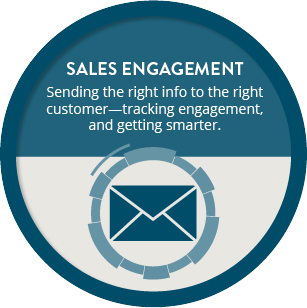
Image Credits: Madrona (opens in a new window)
Some think of sales engagement as an intelligent e-mail cannon and analysis engine on steroids. While in reality, it is much more. Consider these examples: How can I communicate with prospects in a way that is both personalized and efficient? How do I make my outbound sales reps more productive and enable them to respond more quickly to leads? What tools can help me with account-based marketing? What happened to that email you sent out to one of your sales prospects?
Now, take these questions and multiply them by a hundred, or even a thousand: How do you personalize a multitouch nurture campaign at scale while managing and automating outreach to many different business personas across various industry segments? Uh-oh. Suddenly, it gets very complicated.
What sales engagement comes down to is the critical understanding of sending the right information to the right customer, and then (and only then) being able to track which elements of that information worked (e.g., led to clicks, conversations and conversions) … and, finally, helping your reps do more of that.
We see Outreach as the clear leader here, based in Seattle, with SalesLoft as the number two. Outreach in particular is investing considerably in adding additional intelligence and ML to their offering to increase automation and improve outcomes.
Conversational intelligence
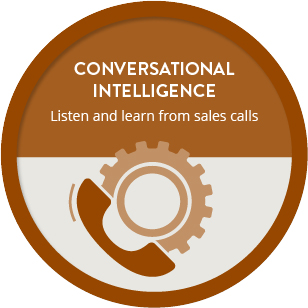
Image Credits: Madrona (opens in a new window)
Conversational intelligence tools help revenue teams — and especially revenue leadership — monitor and interpret the conversations that are happening between their reps and prospects. This analysis creates a stronger learning loop for revenue teams. Just as athletes and coaches watch game film before and after games and during practice, reps and leadership can use these tools to listen and learn from sales calls, make improvements to tactics and strategies, and determine how to best coach reps over time.
For example, it has become commonplace for some of the CEOs in our portfolio to listen to sales call recordings on their commutes or during workouts, etc. It is an effective and efficient way for them to keep a finger on the pulse when it comes to understanding the voice of the customer, guide the fine-tuning of the company’s and product’s messaging and positioning, and learn what good reps sound like. Importantly, from a CRO perspective, it also helps reps hone in on the most effective messaging and sales tactics that ultimately lead to higher “close” rates and faster top-line growth.
Gong has emerged as the market leader, but a number of our portfolio companies use Chorus as well.
Revenue operations
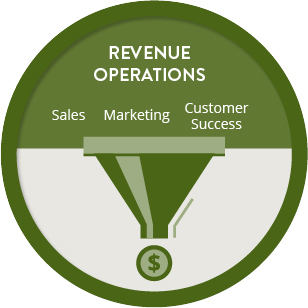
Image Credits: Madrona (opens in a new window)
RevOps is all about creating a better-informed view of the sales funnel through helping drive alignment across sales, marketing and customer service teams, data and processes. According to Clari, “RevOps is the strategic convergence of sales, marketing and customer success to drive full-funnel accountability across the revenue engine.” Most importantly — it creates a stronger ability for CROs and sales leaders to predict future revenues with greater confidence through the ability to more easily understand their data and create powerful views of revenue for the business.
There are many new players in the market that are adding these kinds of RevOps/operational intelligence layers on top of data in Salesforce. They provide a deeper and easier-to-access understanding of core business metrics and, most importantly, more accurate revenue forecasting. Through our work with a broad range of enterprise customers, we have seen our portfolio company, Clari, emerge as a leader in this area. We have seen CEOs and boards come to rely on the “Clari number” as a reliable and indispensable indicator for quarterly forecasts.
Another important component of revenue operations (sometimes referred to as revenue intelligence) is intelligently capturing and synchronizing data across your revenue systems and ensuring your CRM contains ground truth, particularly as it relates to contacts (leads and customers). In other words, ensuring your systems of engagement are harmonized with your system of record. In addition to Clari, we are seeing Salesforce Einstein and People.ai as players in this area.
Where should I start?
While there isn’t a standard approach to where you should begin modernizing your revenue stack, there are some basic steps you can take to know where to focus your approach. First, make sure you have the right foundational technologies.
Agreement management
Increasingly, contracts and agreements are no longer “gathering dust” (either physically or digitally) — they are instead being used to provide scalable, intelligent triggers for business events such as contract renewals and upselling.
The culmination of a sale is getting a signature on the dotted line. But when a company has hundreds of customers and thousands of contracts, keeping track of specific account details and when each comes up for renewal has historically been a manual and time-consuming process.
There are already a number of solutions creating basic contract execution and signature capabilities, DocuSign being the industry standard. Recently DocuSign has been pushing to expand into end-to-end agreement management and what they have coined the “agreement cloud.” Other players such as Apptus (which recently acquired Conga) offer related capabilities such as quote-to-cash, contract management and document generation. Then there are pure-play contract management offerings such as iCertis (a Seattle-based leader in enterprise contract lifecycle management), Lexion (another Madrona portfolio company), which is a machine learning-centered offering that uses NLP to automatically extract key contract terms, and IronClad, which can incorporate sales-related workflows.
CRM and communication
Foundational to not only the revenue-generating side of the business but also the rest of the organization, are two core technology capabilities: CRM and modern communication tools. Let’s quickly break these down:
● CRM: Salesforce is the de facto standard used by many organizations we see. It acts as the system of record for all customer relationship management (CRM) information, both feeding and ingesting from the other software systems in the revenue stack. It is also rolling out a new Salesforce Anywhere app in the second half of 2020, with new tools designed specifically for the remote-virtual-digital workforce.
● Communication: These include both asynchronous text-based communication and real-time video collaboration. The best-in-class text-based communication tool is Slack, with organizations using it to chat both internally as well as externally with prospects and customers. As is widely recognized, Zoom has become the standard for video communication, providing the best performance, most complete feature set and broadest set of integrations. We have started to see more companies using Microsoft Teams for both text-based chat and video. While not as good at threaded chat as Slack or as good at video as Zoom, the fact that it provides both, is slickly integrated with Outlook and is free with Office365, has led the many companies that already use Microsoft for email to adopt Teams.
Next, take inventory of the core capabilities you’ve already adopted across the revenue stack, using this article as your guide. Many organizations have already adopted some pieces of the revenue stack but haven’t yet integrated these technologies to their full potential. Others still need to take the first steps to modernize. Either way, we recommend as a first-order priority to start with evaluating the current state-of-play of your revenue enablement function, and then move on to sales engagement, conversational intelligence and revenue operations. There are literally hundreds of different software tools targeting sales teams, so be careful not to be distracted by “tool overload” constantly looking at the next shiny new object. We find companies that focus on these four core capabilities maximize their success.
Conclusion
We believe we are living in a new normal. Remote-virtual-digital work is going to be a key part of the playbook forever, and the essential revenue software stack is the best way to set up your teams for success.
The power of this stack — revenue enablement, sales engagement, conversational intelligence and revenue operations, integrated on top of your core CRM, communication tools, and agreement management — can drive significant, measurable ROI for your business. If you don’t use it, you’re at a disadvantage.
